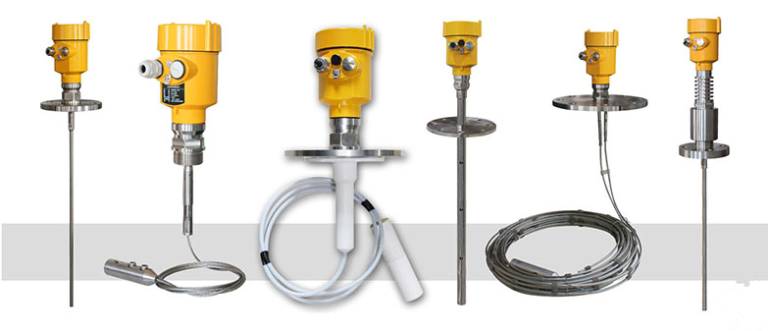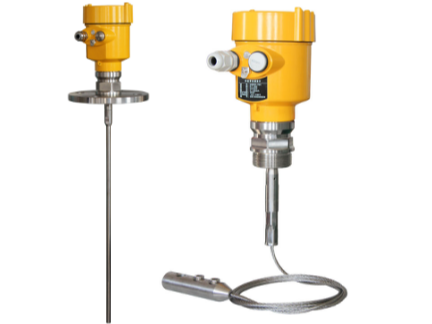A guided wave radar level meter is a measuring instrument based on the time domain reflection principle. The electromagnetic pulse of the radar level meter travels at the speed of light along a steel cable or probe.
When encountering the surface of the measured medium, part of the radar level meter’s pulse is reflected to form an echo, which is returned to the pulse transmitter along the same path.
The distance between the transmitter and the surface of the medium being measured is proportional to the time the pulse travels between them, thus calculating the level height.
The guided wave radar level meter measures liquids, particles, and slurries and is unaffected by medium variations, temperature changes, inert gases, vapors, dust, foam, etc suitable for complex applications such as acid and alkali storage tanks, slurry storage tanks, solid particles, small storage tanks

The first thing to know is that there are no individually mounted guided-wave radar level meters. Separate guided-wave radar level meters can be installed near the sensor or control room, where there is more space and better environmental conditions.
The distance between the guided wave radar level meter and the sensor is limited by the rheological conductivity of the measuring medium and the type of signal cable.
The signal cable refers to the distributed capacitance of the cable, the conductor cross-section, the number of shielding stakes, and the type of connection to the meter in the plant.
When the conductivity is low and the transmission distance is long, a double-shielded cable should be used.

Secondly, to avoid interference with the signal, the signal cable must pass through the grounded steel pipe, and the signal cable and the power cable are not allowed to be installed in the same steel pipe.
Finally, in terms of functional commissioning, the guided wave radar level meter reads the instrument parameters separately, then tests the alarm to the critical value, and then writes the discharge coefficient.
